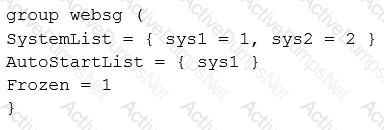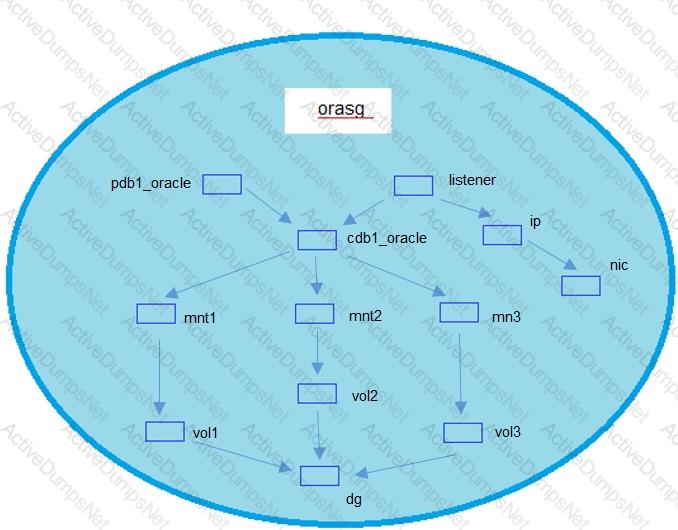Veritas VCS-256 Administration of Veritas InfoScale Availability 7.1 for UNIX/Linux Exam Practice Test
Administration of Veritas InfoScale Availability 7.1 for UNIX/Linux Questions and Answers
What does it mean when a cluster node is in the REMOTE_BUILD state?
An administrator is testing a network interface under Veritas Cluster Server (VCS) control and wants to minimize the time for VCS to detect the fault. How can this be accomplished without affecting any other network interfaces under VCS control?
Which behavior can be specified using the PreferredFencingPolicy attribute?
Which script should an administrator use to collect core dump and stack traces along with GAB and LLT information for support analysis?
An administrator wants to configure a custom event trigger to be invoked when the online script fails to execute and ManageFaults = NONE. Which trigger should the administrator configure?
An administrator needs to set up a three-node cluster with the following characteristics:
The cluster manages an application that depends on a database.
The application and database can be online on the same or a different node.
If the database faults, the application must continue to be online.
Which type of service group dependency should be created to ensure this behavior?
What is the primary benefit of implementing the Intelligent Monitoring Framework feature for resources?
Which action should the administrator perform to ensure the coordination point (CP) service is highly available when adding a CP server into a Veritas Cluster Server environment?
The service group named websg is currently online on the sys3 node. All other nodes are running.
Consider the following partial main.cf file:

What happens to the websg service group if the administrator inadvertently shuts down a critical resource outside of the cluster?
An administrator wants to make a single instance Oracle database highly available and take advantage of Veritas Cluster File System. Which solution should the administrator deploy?
Refer to the configuration.

What will happen to the websg service group if the websg is online when all the systems in the cluster are rebooted simultaneously, then all the systems finish booting and successfully join the cluster?
Refer to the exhibit.
In a three node cluster, the orasg service group is online on one of the systems. The service group has the resources and resource dependencies shown in the exhibit. All resources are critical resources and the following service group attributes have been configured:
- ManageFaults = ALL
- FaultPropagation = 0
- AutoFailOver = 1
What is the expected behavior when the mnt2 resource fails?

